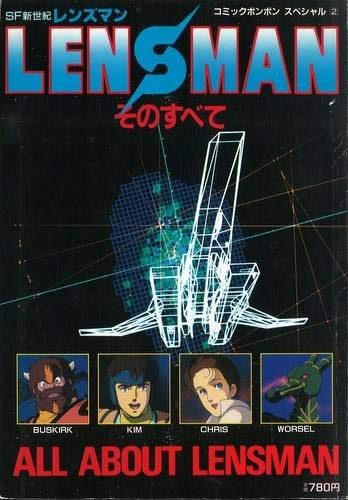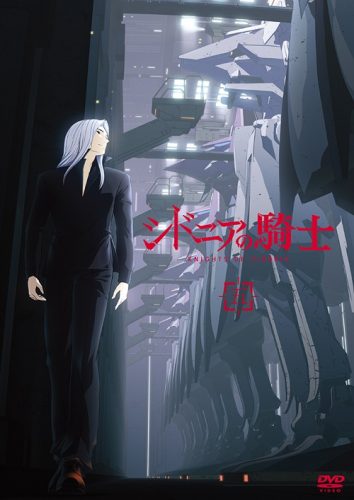
Every new technology introduced to the wide, wonderful world of film is guaranteed to bring controversy with it, sometimes gaining acceptance and other times not, but none have been more divisive than computer-generated imagery. Since its first use in film with 1973 and 1976's Westworld and Futureworld respectively, CGI has been seen by cinephiles as an inferior alternative to practical effects and, while many films are agreed to use the technology very well, it would be unfair to say that most studios tend to see it as an "easy out" of the more time-consuming traditional effects work. While the right amount of talent and resources can do stunning things with CGI, this lackadaisical approach has led to an overwhelming number of films and television shows with distractingly bad effects.
So far, we’ve only been discussing CGI in live action cinema and not animation, but that’s only because the reputation CGI holds with the otaku community is surprisingly much more similar to its relationship with the former. We’re here today to take a look at how this technique has been used in our favorite medium and see if we can find some answers regarding its use therein.
The Early Days
If first impressions are what make a reputation, then it’s no wonder that anime fans view CGI disparagingly. The first notable use of it in anime was in the 1983 film Golgo 13: The Professional, and it shows. The helicopters that attack hand-drawn protagonist Duke Togo, as well as the environments they're rendered in, are some of the most awkward, unshaded, untextured, and unappealing pieces of crap you’ll ever see in motion. Not one millisecond of their screen time isn’t completely jarring, each aspect of their modeling and animation showing an almost complete lack of understanding of how to do this sort of animation. Worse yet, this distractingly poor scene came immediately after the movie’s title sequence; one of the most inspired openings to ever come from Japan, featuring expertly done hand-drawn and stop-motion animation set to Pray For You by then-Playboy model Cindy Wood (by the way, that song’s beat is suspiciously similar to the one used for Muse’s Uprising, just saying).
A year later, another anime film, Shinseiki Lensman, would use CGI in much of the same way to animate flying crafts more easily. The movie, thankfully, had some much better use of the technique for effects animation, crafting intentionally alienating and unfitting visuals for scenes that called for such things. It’s still pretty funny seeing an average 2D anime hero run from some nondescript low-poly 3D goop, but most of what was done in this regard is molded to fit the unnatural atmosphere the film presents during these scenes. Much like Steven Lisberger’s Tron in '82, the CGI is extremely outdated but is still visually appealing at times because the artists made it fit a style that took advantage of its look.
3D Becomes Mainstream
The previous 2 films were the only times anime would touch CGI for years but, curiously, they set a near-inescapable trend for the industry once the technique would make its return. The watershed moment for CGI in anime was the ground-breaking Ghost in the Shell in 1995, whose acclaim can be partially attributed to its highly effective use of its 3D additions, seemingly expanding on how Lensman did it right while abandoning the areas in which it faltered. More specifically, GitS focused its CGI on its effects animation to great effect, mostly using it to show the computer-related elements of the film itself. Sure, the fact that the form had been more refined since Lensman helped, but most of its success is based on the fact that it found a style that worked for it? After all, what would be better at representing computers than computers?
From then on the floodgates were open for CGI in anime. At the best of times, it would still be focused on effects, but the ability to use the technique to portray actual objects and people would improve a lot from the days of Golgo and Lensman, though the practice was still not as widely accepted. Some great shows and films were made during this time using CGI for things like backgrounds, mechs, background characters and character duplicates for performing more detail-oriented movements. Some fans welcomed this new practice with open arms and others would reject all but the very best 3D animation in their otherwise 2D shows and, even then, many of the more dedicated enthusiasts seemed to prefer hand-drawn animation. The practice had matured a lot but was still struggling to find a comfortable spot in the medium.
Fully CGI Anime

Up until now, we've only been covering CGI in otherwise 2D anime and that's mostly because there really wasn't much in the way of full 3D animation on Japanese television during this time. Discounting video games, 3D animation in Japan tended to stick to experiments of questionable success, like the uncanny Final Fantasy movies, or more visually simple shorts that could almost be mistaken for American cartoons, such as The Gregory Horror Show.
Then, everything changed with the arrival of Polygon Pictures. This Tokyo based studio has actually been around since 1983, providing benchmark CGI work for too many popular movies and tv shows to even begin to name, but they only recently began creating fully animated productions by and for the Japanese, like Knights of Sidonia and Ajin. At the time, these were considered bold new leaps into the future, but they haven’t aged very gracefully in the few years since their releases. They did a lot of manga adaptations and don’t really seem to know how to translate designs that look good in 2D into ones that look good in 3D so characters lie in a sort of uncanny valley in that regard. They’re still making some high-profile adaptations, like their animated Godzilla films or their Fist of the Blue Sky show, but they don’t really address the issues fans have had with their style and as such they seem to be drifting apart from the mainstream otaku community, at least here in the West.
Of course, Studio Sanzigen may be partially responsible for this, as they have not only been cranking out sleeper, full-CG hits, but they've been doing it fast, so what's their secret? Well, we've been alluding to the fact that CGI in anime tends to be a lot better when pursuing a distinct style. After all, the more problematic productions mentioned here all simply dropped some 2D animation into 3D animation with little regard for tact or direction. It may surprise you then, to learn that the secret of Sanzigen’s success is the fact that they use typical anime aesthetics, or rather, that they commit to doing so fully. Not only do their character models fit their 3D worlds comfortably, but they go to incredible lengths to replicate the shot composition and cinematography of traditional animation, carving their own style out of the already tried-and-tested standard.
Final Thoughts

At one time, it seemed as though CGI and anime would never work together and, while some tension remains when combining the two media, it’s a relationship that’s come amazingly far in only 35 years. And things only seem to be getting better, too. Sure, shows like the Berserk reboot rear their ugly heads every now and then, but as we’ve seen, 3D anime is on its way to finding itself at home with the rest of the art form.
While we do mainly thank Sanzigen for this, we also can’t ignore the other productions we didn’t have the time to touch on, like Land of the Lustrous. CGI integration in 2D anime has been getting a lot better too, with offerings from this year like J.C. Staff’s Planet With or Trigger’s SSSS.Gridman making the blend look better than ever before. And speaking of Trigger, their upcoming movie, Promare, is going to be completely CG and seems to be communicating all the same style and energy as the best of them. 3D animation hasn’t had the best history coming from Japan, but it looks like that attitude is about to change.
Recommended Post
5 Instances of Hilariously Bad CG in Anime
Recommended Post



